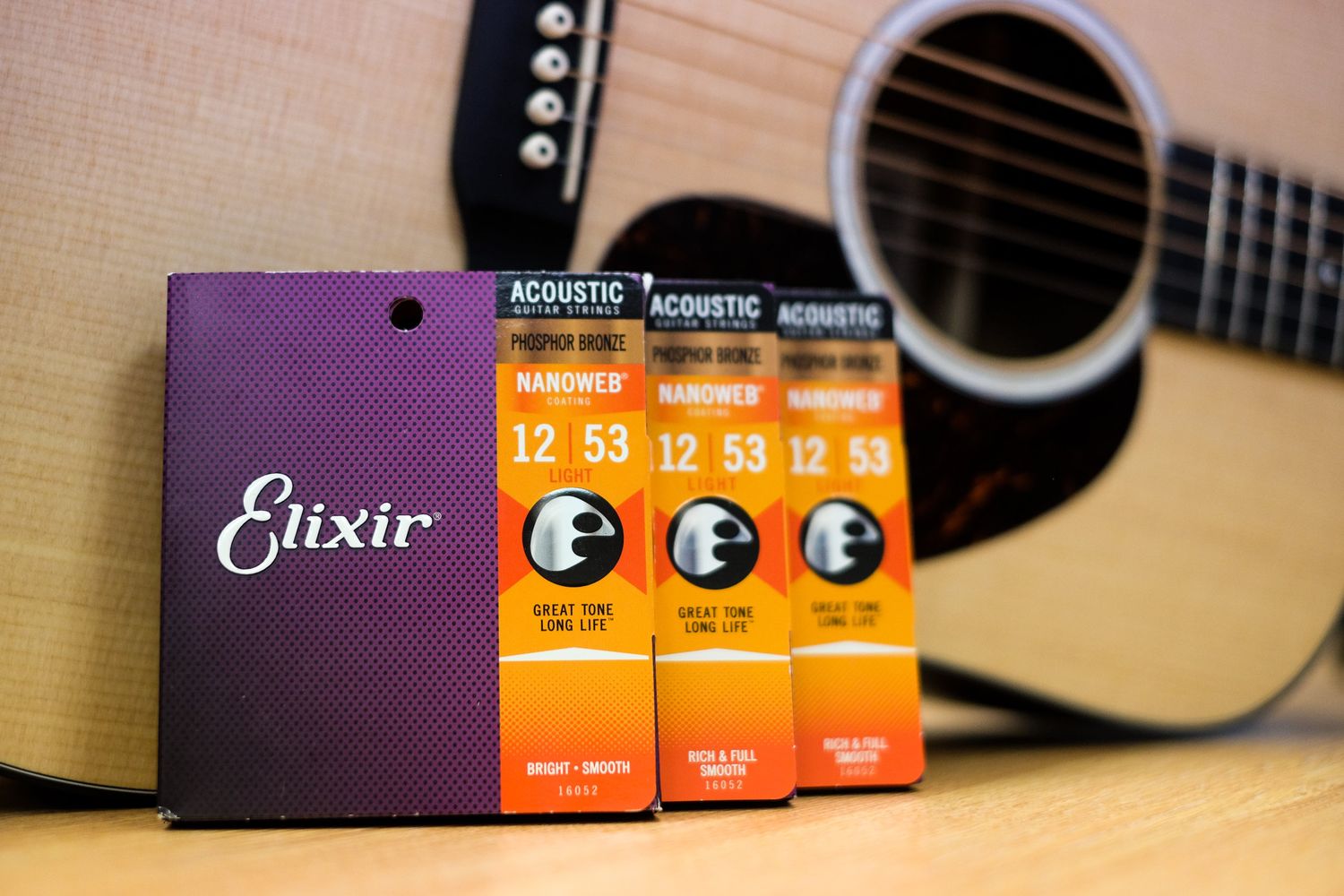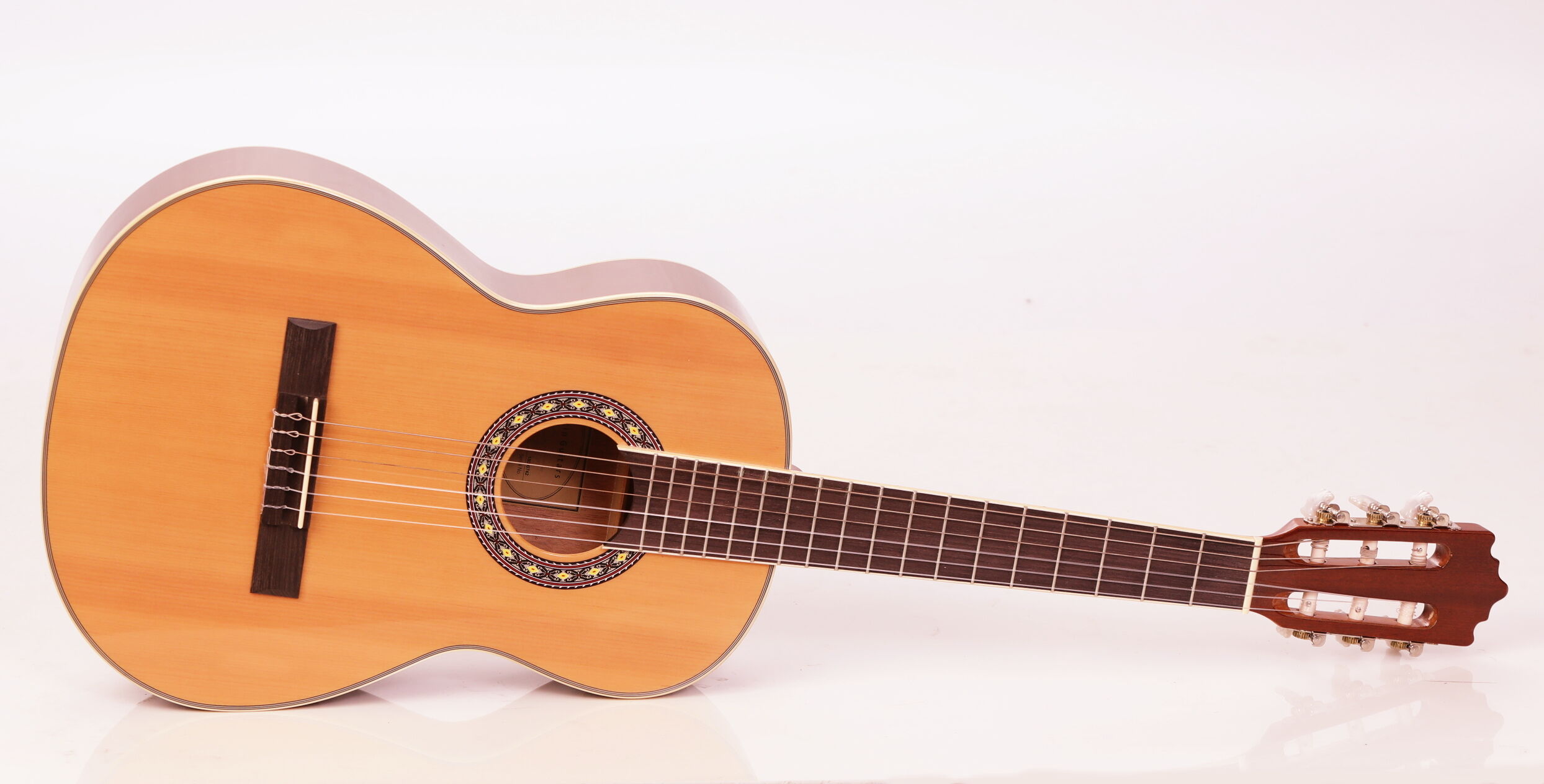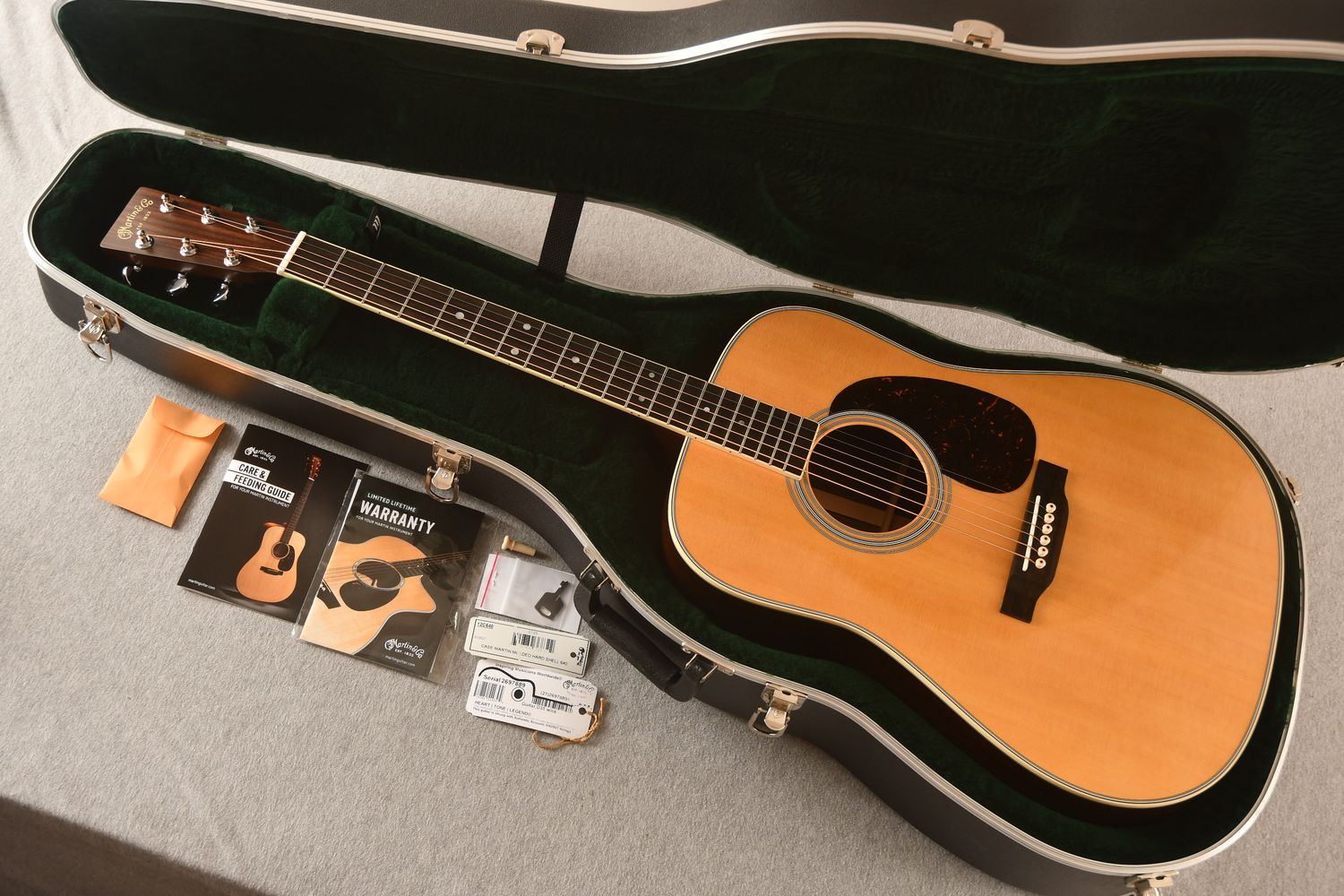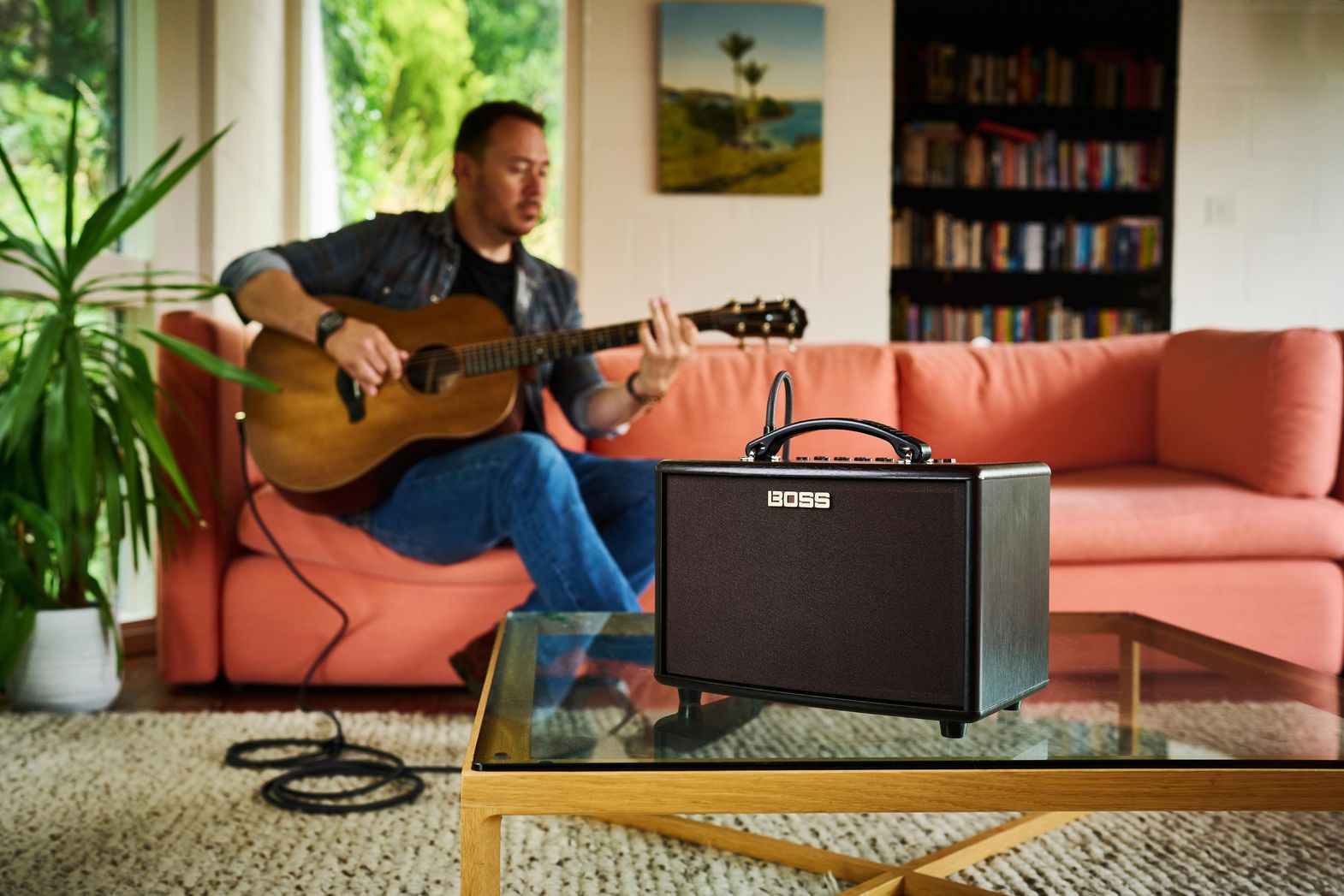Home>Production & Technology>Acoustic>What Is A Semi-Acoustic Guitar


Acoustic
What Is A Semi-Acoustic Guitar
Published: March 11, 2024
Discover the unique sound and versatility of semi-acoustic guitars. Learn about their construction, tone, and how they differ from traditional acoustic guitars. Explore the world of semi-acoustic guitars today!
(Many of the links in this article redirect to a specific reviewed product. Your purchase of these products through affiliate links helps to generate commission for AudioLover.com, at no extra cost. Learn more)
Table of Contents
Introduction
The world of music is a rich tapestry woven with diverse sounds and instruments, each with its own unique charm and character. Among these, the semi-acoustic guitar stands as a versatile and captivating member of the stringed instrument family. Its distinctive blend of acoustic resonance and electric amplification has made it a favorite among musicians across various genres.
Semi-acoustic guitars, also known as hollow-body or semi-hollow guitars, occupy a special place in the realm of musical instruments. They offer a harmonious fusion of the warm, natural tones of an acoustic guitar and the amplified power of an electric guitar. This duality makes them a popular choice for musicians seeking a versatile instrument that can adapt to a wide range of musical styles and settings.
The allure of the semi-acoustic guitar lies in its ability to produce rich, resonant tones that can be further shaped and amplified to suit the musician's artistic vision. Whether strummed gently for a mellow, intimate sound or played with vigor to fill a concert hall with electrifying energy, the semi-acoustic guitar delivers a captivating sonic experience.
In this article, we will delve into the captivating world of semi-acoustic guitars, exploring their history, construction, sound, and the playing styles they accommodate. By the end of this journey, you will have gained a deeper understanding of this remarkable instrument and the role it plays in shaping the musical landscape. So, let's embark on this melodic adventure and unravel the enchanting tale of the semi-acoustic guitar.
Definition of Semi-Acoustic Guitar
A semi-acoustic guitar, also referred to as a hollow-body or semi-hollow guitar, is a unique hybrid that combines the acoustic resonance of a traditional acoustic guitar with the amplified capabilities of an electric guitar. This distinctive instrument features a hollow or semi-hollow body, which sets it apart from solid-body electric guitars while distinguishing it from fully acoustic models. The hollow or semi-hollow design allows the guitar to produce a rich, natural acoustic sound, making it an ideal choice for intimate performances and studio recordings.
One of the defining characteristics of a semi-acoustic guitar is its sound holes, which are typically located on the guitar's top, similar to those found on acoustic guitars. These sound holes facilitate the projection of sound and contribute to the instrument's acoustic-like resonance. Additionally, semi-acoustic guitars are equipped with pickups and electronic components, enabling them to be connected to amplifiers and sound systems for enhanced volume and tonal versatility.
The versatility of semi-acoustic guitars makes them well-suited for a wide range of musical genres, including jazz, blues, rock, and pop. Their ability to produce warm, mellow tones as well as vibrant, amplified sounds has endeared them to musicians seeking a dynamic instrument that can adapt to diverse playing styles and performance settings.
Semi-acoustic guitars are often favored by players who appreciate the organic, expressive qualities of acoustic instruments but also require the flexibility and power of electric guitars. Whether used for soulful, unplugged performances or electrifying stage shows, the semi-acoustic guitar offers a harmonious blend of acoustic authenticity and electric adaptability, making it a cherished companion for musicians seeking a versatile and expressive instrument.
History of Semi-Acoustic Guitars
The history of semi-acoustic guitars is a captivating journey that intertwines innovation, craftsmanship, and the evolving needs of musicians. The roots of these distinctive instruments can be traced back to the early 20th century, a time of significant experimentation and creativity in the realm of guitar design and construction.
The concept of a semi-acoustic guitar emerged as a response to the desire for an instrument that could offer the best of both acoustic and electric worlds. In the 1930s, guitar makers began exploring ways to create a guitar that retained the natural resonance of an acoustic instrument while incorporating electronic amplification for increased volume and tonal possibilities.
One of the pioneering figures in the development of semi-acoustic guitars was the renowned guitar manufacturer Gibson. In 1936, Gibson introduced the ES-150, a groundbreaking model that combined a hollow body with an electromagnetic pickup. This innovative design allowed the guitar to produce a rich, acoustic-like sound while harnessing the power of amplification, marking a significant milestone in the evolution of semi-acoustic guitars.
The popularity of semi-acoustic guitars soared in the 1940s and 1950s, particularly within the jazz and blues music scenes. Musicians were drawn to the warm, resonant tones produced by these instruments, which complemented the expressive and soulful nature of their music. The versatility of semi-acoustic guitars also made them well-suited for small ensemble performances and intimate settings, further fueling their appeal among musicians and audiences alike.
As the decades progressed, the design and construction of semi-acoustic guitars continued to evolve, with various manufacturers introducing new models and innovative features. The 1960s witnessed a surge in the use of semi-acoustic guitars in rock and pop music, as artists sought instruments that could deliver a balance of acoustic warmth and electric power.
Today, the legacy of semi-acoustic guitars endures, with modern luthiers and guitar makers continuing to refine and expand upon the original concepts. These instruments remain cherished for their ability to offer a harmonious blend of acoustic authenticity and electric adaptability, catering to the diverse musical expressions of contemporary artists.
The history of semi-acoustic guitars stands as a testament to the enduring quest for sonic innovation and the timeless allure of instruments that bridge the gap between tradition and modernity. As these guitars continue to captivate musicians and audiences around the world, their legacy remains deeply intertwined with the ever-evolving tapestry of musical creativity and expression.
Construction and Design
The construction and design of semi-acoustic guitars are a harmonious marriage of traditional craftsmanship and modern innovation. These instruments are characterized by their hollow or semi-hollow bodies, which play a pivotal role in shaping their distinctive sound and aesthetic appeal.
The body of a semi-acoustic guitar is typically crafted from tonewoods such as maple, mahogany, or spruce, chosen for their acoustic properties and visual allure. The hollow or semi-hollow design allows the body to resonate and produce rich, warm tones, akin to those of a traditional acoustic guitar. This acoustic-like resonance is further enhanced by the presence of sound holes, which are strategically positioned on the guitar's top to facilitate the projection of sound.
In addition to the acoustic elements, semi-acoustic guitars are equipped with pickups and electronic components, distinguishing them from fully acoustic models. These pickups capture the vibrations of the strings and convert them into electrical signals, which can then be amplified and shaped to produce a wide range of tones. The inclusion of these electronic components adds a layer of versatility to the instrument, allowing musicians to explore various sonic possibilities and adapt to different playing styles and performance settings.
The neck of a semi-acoustic guitar is another crucial component of its design, contributing to playability and tonal characteristics. Typically crafted from sturdy yet resonant woods such as mahogany or maple, the neck is designed to provide stability and sustain while accommodating the instrument's fretboard and frets. The fretboard, often made of rosewood or ebony, offers a smooth surface for the player's fingers to navigate, facilitating fluid and expressive playing.
The overall design of a semi-acoustic guitar reflects a balance of form and function, with meticulous attention to detail evident in the craftsmanship of the instrument. From the elegant curves of the body to the precise placement of the bridge and tailpiece, every aspect of the design is carefully considered to ensure optimal playability and sonic performance.
In essence, the construction and design of semi-acoustic guitars embody a fusion of acoustic tradition and electric innovation, resulting in instruments that offer a captivating blend of natural resonance and amplified versatility. This thoughtful integration of acoustic and electric elements has solidified the position of semi-acoustic guitars as cherished companions for musicians seeking an instrument that can effortlessly transition between intimate acoustic moments and electrifying amplified performances.
Sound and Tone
The sound and tone of a semi-acoustic guitar are a testament to its unique blend of acoustic warmth and electric versatility. These instruments possess a sonic character that resonates with musicians and audiences alike, offering a rich and expressive tonal palette that adapts seamlessly to various musical styles and performance settings.
At the core of a semi-acoustic guitar's sonic identity is its ability to produce warm, resonant tones reminiscent of traditional acoustic instruments. The hollow or semi-hollow body construction, coupled with sound holes strategically positioned on the guitar's top, allows the instrument to resonate and project sound with a natural, organic quality. When played unplugged, the semi-acoustic guitar exudes a mellow, intimate sound that captivates listeners with its warmth and depth.
However, the sonic allure of a semi-acoustic guitar extends beyond its acoustic-like qualities. Equipped with pickups and electronic components, these instruments have the capacity to harness the power of amplification, unlocking a world of tonal possibilities. When connected to an amplifier or sound system, the semi-acoustic guitar can produce vibrant, electrifying tones that fill the air with energy and presence. The combination of acoustic resonance and electric amplification results in a dynamic sonic range, allowing musicians to explore a spectrum of tones, from gentle and subdued to bold and commanding.
The versatility of a semi-acoustic guitar's sound and tone makes it well-suited for a diverse array of musical genres and playing styles. In jazz and blues, the instrument's warm, expressive qualities shine through, adding depth and character to melodic improvisations and soulful chord progressions. In rock and pop, the semi-acoustic guitar's ability to deliver a balance of acoustic warmth and electric power makes it a versatile companion for both rhythmic accompaniment and melodic leads.
Whether in a small, intimate setting or a grand stage performance, the sound and tone of a semi-acoustic guitar resonate with a captivating allure, inviting musicians to explore the boundless possibilities of sonic expression. It is this harmonious fusion of acoustic authenticity and electric adaptability that defines the captivating sound and tone of the semi-acoustic guitar, making it a cherished instrument in the hands of musicians seeking a versatile and expressive sonic companion.
Popular Brands and Models
When it comes to semi-acoustic guitars, several brands have established themselves as pioneers in crafting exceptional instruments that embody the perfect fusion of acoustic tradition and electric innovation. These brands have garnered acclaim for their commitment to quality craftsmanship, innovative designs, and the ability to cater to the diverse needs of musicians across genres. Let's explore some of the popular brands and their iconic models that have left an indelible mark on the world of semi-acoustic guitars.
-
Gibson: As one of the most revered names in the guitar industry, Gibson has played a pivotal role in shaping the legacy of semi-acoustic guitars. The Gibson ES-335 stands as a timeless icon, renowned for its semi-hollow body design, versatile tonal capabilities, and elegant aesthetics. This model has been embraced by legendary musicians across genres, making it a cornerstone of Gibson's esteemed semi-acoustic guitar lineup.
-
Epiphone: A sister brand of Gibson, Epiphone has carved its own niche in the realm of semi-acoustic guitars. The Epiphone Casino holds a storied legacy, notably favored by artists such as The Beatles. Its distinctive hollow body construction and vibrant, jangly tones have earned it a place of honor among musicians seeking a classic semi-acoustic sound.
-
Ibanez: Known for its innovative designs and contemporary aesthetics, Ibanez has made significant contributions to the world of semi-acoustic guitars. The Ibanez Artcore series has garnered widespread acclaim, offering a diverse range of semi-hollow and hollow-body models that cater to players across various musical genres. These instruments are celebrated for their playability, tonal versatility, and modern design sensibilities.
-
Gretsch: With a rich heritage dating back to the early 20th century, Gretsch has been synonymous with iconic semi-acoustic guitar models that exude vintage charm and sonic excellence. The Gretsch G2622 Streamliner and G5420 Electromatic are revered for their distinctive sound, elegant aesthetics, and the ability to capture the essence of classic rock 'n' roll and rockabilly tones.
-
PRS Guitars: While primarily known for its solid-body electric guitars, PRS Guitars has ventured into the realm of semi-acoustic instruments with remarkable offerings. The PRS SE Hollowbody II exemplifies the brand's dedication to craftsmanship and sonic innovation, delivering a blend of acoustic resonance and electric prowess that resonates with modern players seeking a versatile semi-acoustic experience.
These brands and their iconic models represent a tapestry of sonic artistry, craftsmanship, and musical heritage. Whether it's the timeless elegance of a Gibson ES-335, the jangly allure of an Epiphone Casino, the modern versatility of an Ibanez Artcore, the vintage charm of a Gretsch Streamliner, or the contemporary innovation of a PRS SE Hollowbody II, each instrument embodies the spirit of sonic exploration and artistic expression. As musicians continue to seek instruments that inspire creativity and elevate their sonic journeys, these popular brands and models stand as beacons of excellence in the realm of semi-acoustic guitars.
Playing Styles and Techniques
The versatile nature of semi-acoustic guitars lends itself to a wide array of playing styles and techniques, making it a favored instrument among musicians seeking sonic flexibility and expressive capabilities. From the soulful melodies of jazz to the energetic rhythms of rock, semi-acoustic guitars accommodate diverse playing styles with finesse and nuance.
Jazz and Blues
In the realm of jazz and blues, the semi-acoustic guitar reigns supreme, offering a warm, resonant tone that complements the expressive nature of these genres. Jazz guitarists often employ fingerstyle techniques, utilizing the instrument's rich tonal palette to craft intricate chord voicings and melodic improvisations. The hollow or semi-hollow body construction enhances the guitar's natural resonance, allowing players to evoke soulful, emotive tones that define the essence of jazz and blues music.
Rock and Pop
Semi-acoustic guitars have also found a place in the world of rock and pop, adding a touch of organic warmth and dynamic range to the sonic landscape. In rock music, the instrument's ability to deliver a balance of acoustic authenticity and electric power makes it a versatile companion for both rhythmic accompaniment and melodic leads. Whether strummed with vigor or played with melodic finesse, the semi-acoustic guitar lends itself to a diverse range of rock and pop playing styles, from driving power chords to shimmering arpeggios.
Fingerstyle and Percussive Techniques
The responsive nature of semi-acoustic guitars makes them well-suited for fingerstyle and percussive techniques, allowing players to explore intricate patterns and rhythmic textures. Fingerstyle techniques, such as Travis picking and classical fingerpicking, showcase the instrument's ability to articulate nuanced dynamics and melodic intricacies. Additionally, percussive techniques, including tapping and slapping, can unlock rhythmic possibilities that add depth and expressiveness to the instrument's sonic repertoire.
Solo Performances and Ensemble Settings
Whether in solo performances or ensemble settings, semi-acoustic guitars offer a captivating presence that can adapt to various musical contexts. In intimate solo performances, the instrument's acoustic-like resonance creates an immersive sonic experience, drawing listeners into the emotive nuances of the music. In ensemble settings, the semi-acoustic guitar contributes a blend of warmth and clarity, serving as a versatile voice within the musical tapestry.
Versatility and Sonic Expression
Ultimately, the playing styles and techniques employed with semi-acoustic guitars reflect the instrument's versatility and capacity for sonic expression. From delicate fingerstyle passages to bold, amplified performances, the semi-acoustic guitar invites musicians to explore a spectrum of tones and textures, shaping their musical narratives with depth and emotion.
In essence, the playing styles and techniques associated with semi-acoustic guitars embody a rich tapestry of musical expression, offering a canvas for artists to paint sonic landscapes that resonate with passion and creativity. As musicians continue to explore the boundless possibilities of the instrument, the legacy of the semi-acoustic guitar as a versatile and expressive companion in the world of music remains unwavering.
Conclusion
In conclusion, the semi-acoustic guitar stands as a testament to the harmonious fusion of acoustic tradition and electric innovation, offering musicians a versatile and expressive instrument that adapts seamlessly to diverse musical styles and performance settings. From its rich history and innovative construction to its captivating sound and versatile playing styles, the semi-acoustic guitar embodies a timeless allure that resonates with musicians and audiences alike.
The journey of the semi-acoustic guitar is a captivating tale of ingenuity and creativity, rooted in the desire to bridge the sonic worlds of acoustic resonance and electric amplification. From its early developments in the 1930s to its enduring presence in contemporary music, the instrument has evolved to become a cherished companion for musicians seeking a dynamic sonic experience.
The construction and design of semi-acoustic guitars reflect a meticulous balance of form and function, with the marriage of tonewoods, hollow or semi-hollow bodies, and electronic components culminating in instruments that offer a captivating blend of natural resonance and amplified versatility. This thoughtful integration of acoustic and electric elements has solidified the position of semi-acoustic guitars as cherished companions for musicians seeking an instrument that can effortlessly transition between intimate acoustic moments and electrifying amplified performances.
The sound and tone of a semi-acoustic guitar resonate with a captivating allure, inviting musicians to explore the boundless possibilities of sonic expression. Whether producing warm, mellow tones in unplugged performances or delivering vibrant, electrifying sounds on stage, the instrument's sonic character captivates listeners and empowers musicians to craft evocative musical narratives.
Furthermore, the playing styles and techniques associated with semi-acoustic guitars embody a rich tapestry of musical expression, offering a canvas for artists to paint sonic landscapes that resonate with passion and creativity. From delicate fingerstyle passages to bold, amplified performances, the semi-acoustic guitar invites musicians to explore a spectrum of tones and textures, shaping their musical narratives with depth and emotion.
As the legacy of semi-acoustic guitars continues to endure, it remains deeply intertwined with the ever-evolving tapestry of musical creativity and expression. The instrument's ability to inspire and captivate musicians across genres underscores its significance in shaping the sonic landscape of contemporary music.
In essence, the semi-acoustic guitar represents a harmonious convergence of tradition and innovation, offering a timeless allure that transcends musical boundaries. Its enduring legacy as a versatile and expressive companion in the world of music reaffirms its position as a cherished instrument that continues to inspire and resonate with musicians and audiences worldwide.











